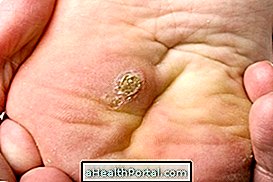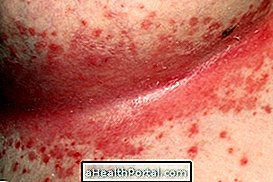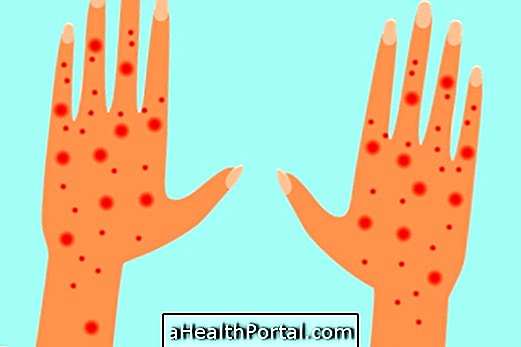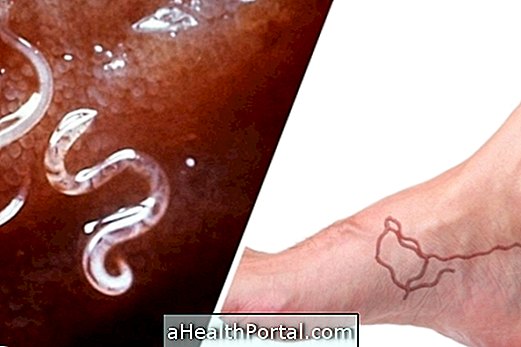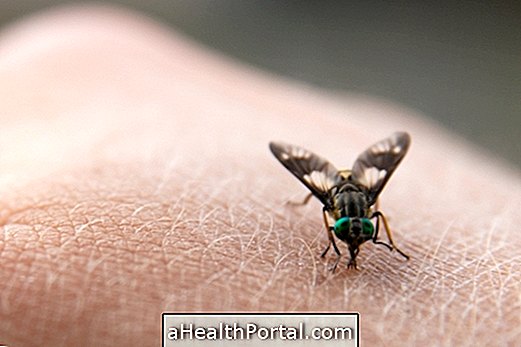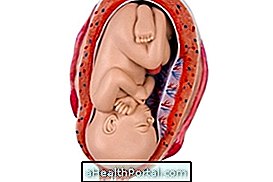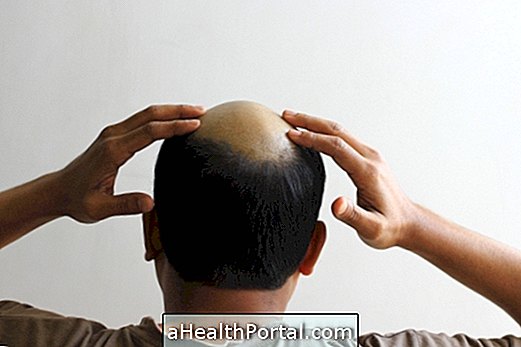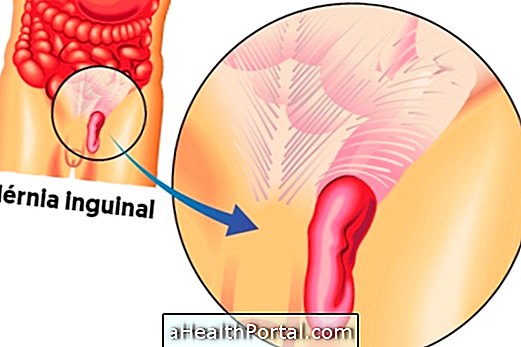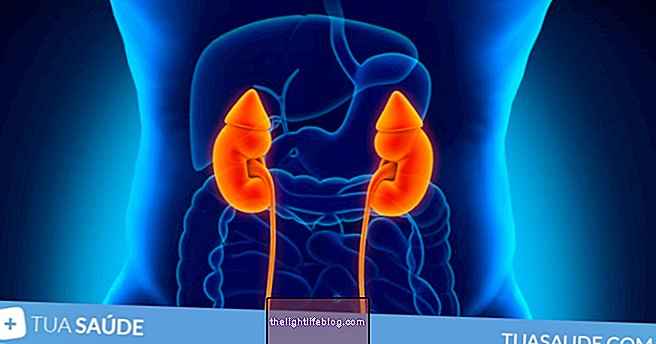Abscess is a small elevation of the skin characterized by the presence of pus, redness and increased local temperature. Usually the abscess is caused by a bacterial infection and can appear anywhere on the body.
The abscess may be visible on the skin or develop inside the body, being called an internal abscess, such as a brain abscess, for example, which is more difficult to identify.
The diagnosis is usually made by observing the person's abscess and symptoms. Usually the abscess is drained naturally, however, if it is large and causes pain and a high fever, drainage should be performed by the doctor in your office. In addition, because it is a bacterial infection most of the time, the doctor may recommend the use of antibiotics to eliminate the bacteria. A natural way to treat the abscess is through the clay poultice, which speeds up the healing process of the abscess.

Main types
The abscess can appear in several parts of the body and the main types are:
- Anal abscess: This type of abscess is caused by a bacterial infection that leads to the formation of a pus-filled cavity around the anal area that causes pain when sitting or evacuating, for example. Treatment is done by the surgeon by draining the abscess. Learn how to identify or treat anal abscess;
- Periodontal abscess: Periodontal abscess is characterized by the presence of a pouch of pus in the gums near the root of the tooth and is usually caused by infections;
- Dental abscess: This abscess can happen due to untreated caries, injury or poorly performed dental work, which allows bacteria to enter, for example. Treatment is usually done by the dentist by draining the abscess and using antibiotics. However, in more severe cases, extraction of the affected tooth may be recommended by the dentist. Understand what a dental abscess is and what to do;
- Axillary abscess: Axillary abscess is usually the result of folliculitis, which is inflammation of the hair root. The treatment is done with a compress of warm water and it is indicated not to itch;
- Vaginal abscess: Vaginal abscess is due to inflammation of the Bartholin gland, which is a gland located in the anterior region of the vagina that has the function of lubricating it. Learn how to treat inflammation of the Bartholin gland.
- Cerebral abscess: This abscess is rare and occurs due to the presence of bacteria in other regions of the head or in the bloodstream that reach the brain, leading to the formation of the abscess. Treatment is usually done using antibiotics and surgery to drain the abscess.
- Lung abscess: Lung abscess is identified by chest X-ray and can be caused by the presence of bacteria that live in the mouth and reach the lung. This abscess can cause symptoms such as tiredness, loss of appetite and fever.
Abscesses appear more frequently in people who have low immunity due to diseases such as AIDS and cancer, chemotherapy, drug use or ulcerative colitis, for example.
To avoid abscesses it is important to wash your hands well, avoid sharing towels and having a balanced diet, thus avoiding infections.
Abscess symptoms
The abscess has very characteristic symptoms, such as redness around the abscess, pain, swelling, increased temperature in the area and the presence of pus in the abscess. In addition, the presence of the abscess can lead to nausea, chills and a high fever, and it is recommended to seek medical help if these symptoms arise.
The abscess is most often the result of bacterial infections, in which the immune system initiates the inflammatory response due to the presence of bacteria. However, the abscess can also happen due to obstruction in glands or ingrown hairs, which is the case of folliculitis, in which there is an inflammation at the root of the hair, leading to the appearance of small pus blisters that can cause burning and itching. Know what it is and how to treat folliculitis.
How the treatment is done
The treatment for the abscess is done according to the doctor's guidance and the use of antibiotics is usually indicated in order to eliminate or prevent bacterial infections. In addition, it may be necessary to drain the abscess, which must be done by the doctor.
It is contraindicated to perform drainage at home, as there are more chances of exposure to microorganisms, which can worsen the condition. It is also indicated not to squeeze the abscess, as this can take the pus, which contains bacteria, into the tissue, worsening the infection.
One of the homemade options to treat the abscess is to put a compress with warm water and clean the area with mild soap. An herbal poultice can also be applied to the abscess that aims to speed up the healing process and decrease the risk of infections.
Was this information helpful?
Yes No
Your opinion is important! Write here how we can improve our text:
Any questions? Click here to be answered.
Email in which you want to receive a reply:
Check the confirmation email we sent you.
Your name:
Reason for visit:
--- Choose your reason --- DiseaseLive betterHelp another personGain knowledge
Are you a health professional?
NoMedicalPharmaceuticalsNurseNutritionistBiomedicalPhysiotherapistBeauticianOther
